Photography by Jordan Randall and Courtesy of the City of Lakeland
Written by Sally I. Barcelo and Julianne Waller
Three major city projects that will transform the way people work, play and live in Lakeland.
When Lakeland, Florida, took its first census in 1890, the population was 552. Today, our city has reached its highest population of 115,566. Polk County has been ranked the second-fastest growing area in the country. With Lakeland’s rapid population growth, it is important that our city adapts while remaining true to the personality and characteristics that make Lakeland fit for Lakelanders.
Some of the world’s most influential urbanists, such as Jane Jacobs, William H. Whyte, Kevin Lynch, Jan Gehl, and Jeff Speck have identified principles that form the elements of success for a vibrant city. In short, research proves that great cities create sustainable human-scaled places where people can live healthy and happy lives – and these cities are built for people, not just cars.
The Lakelander sat down with city leadership for a breakdown of the top three projects in motion that will enhance quality of life for Lakelanders.
Connectivity Project
Whether you’re walking, biking, or taking the bus, the City of Lakeland’s Connectivity Project has you in mind! The Connectivity Project is an umbrella term for multiple ongoing projects of varying sizes, all revolving around transportation. In addition to constructing new streets, trails, and transit systems, this project focuses on safety: updating crosswalks and intersections to be more pedestrian-friendly, putting in more sidewalks along our major streets, and improving street lighting.

Conceptual schematic renderings for the City of Lakeland’s proposed High Speed Rail Station.
One of the larger plans within The Connectivity Project is a new transit terminal for the Citrus Connection, which will include a relocated Amtrak station with a passenger platform and the potential for an overpass to Bonnet Springs Park. The City of Lakeland has asked the county’s Department of Transportation to begin funding for the environmental analysis, but beginning construction will be slower––estimating around five to seven years. “This transit hub is going to take us to the next level and avoid what a lot of places in Florida have done, widening roadways and creating unsafe transportation,” Transportation Manager Charles Barmby says. “Bit by bit, we’re trying to plan towards connecting our trails or sidewalks with a modern transit facility. It’s all about improving safety and maintaining Lakeland’s quality of life.” Smaller-scale projects are also underway––for example, connecting Dixieland to Downtown. This will connect the neighborhoods on the other side of Dixieland and South Lake Morton, provide mass transit opportunities to better serve residents, encourage the development of small businesses, and make it a safer, more walkable corridor for pedestrians.
“Bit by bit, we’re trying to plan towards connecting our trails or sidewalks with a modern transit facility. It’s all about improving safety and maintaining Lakeland’s quality of life.”
. . .
Proposed Projects
Transportation Hub
New Transit Terminal for Citrus Connection
Relocation of Amtrak Station
A new transit terminal for the Citrus Connection featuring a passenger platform and the potential for an overpass to Bonnet Springs Park
. . .
The budget for these projects varies. For smaller-scale projects like creating trails, it’s likely to be around three million dollars. For larger projects, like roadway improvements, it would be around ten million. “We’re able to attract substantial state and federal dollars to take care of many of these projects,” Barmby says. “Infrastructure funding in Washington gives us opportunities as well. It is going to be key to make sure that the community stays engaged in giving support for these projects because when that money becomes available, we want to be in the position to take advantage of that, as much as possible. It’s just staging [the projects] out so as we move forward the public can see immediate benefits but keeping our eye on the long term vision.”
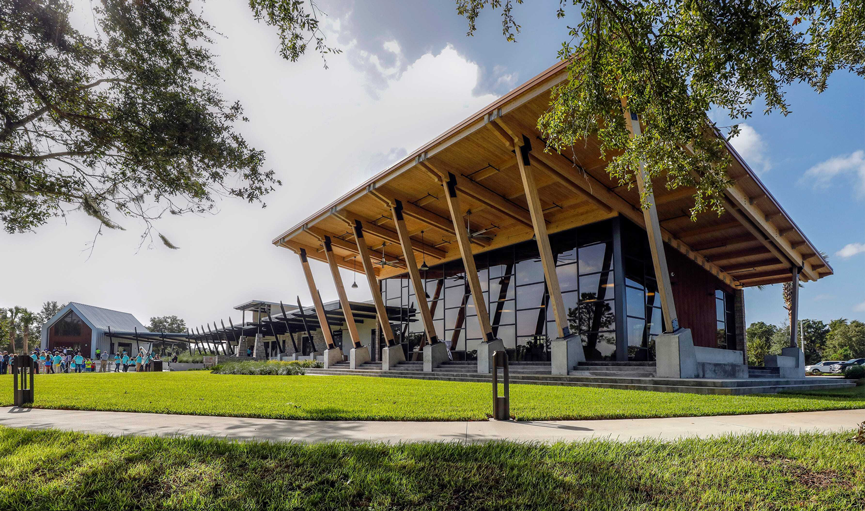
Located in north Lakeland, the new Lake Crago outdoor recreation complex houses classroom space, event rental space, Lakeland’s first public kayaking and canoeing facility, and an educational amphitheater.
The key objective of the Connectivity Project is to maintain the quality of life for citizens of Lakeland and improve their safety while preserving the character of the community. Shockingly, the Lakeland/Winter Haven metro area is one of the top ten most dangerous areas for pedestrians in the country. However, positive changes are underway! The Connectivity Project is determined to see zero fatalities or serious injuries on our transportation systems in Lakeland.
The various plans throughout this project will also accommodate our quickly expanding city, instead of struggling with future problems like major highway revisions. “A lot of this is going to take a long time to get there,” says Barmby. “But if we’re able to implement different components year after year, then in ten to fifteen years, we’ll have a mature city with a solid transportation system.”
Downtown Expansion
As Lakeland continues to expand, so does its core: Downtown! Although Downtown Lakeland has continued to expand for more than 30 years, many Lakelanders have not associated the RP Funding Center and the area surrounding it—areas west of Central Downtown—as a part of Downtown. According to Community Redevelopment Agency Manager, Alis Drumgo, that is about to change. The planning of the western expansion of Downtown Lakeland has been in place for quite some time. As Drumgo indicated, “overall the project is part of the [City Of Lakeland] Commission’s drive for strategic planning and to continue to grow in a smart manner in expanding towards the RP Funding Center and incorporating development around Bonnet Springs Park.” The continued development of the RP Funding Center area, the new Bonnet Springs Park, and the future development of the former Florida Tile site will all be key to Western Downtown expansion. Drumgo also indicated that Downtown expansion planning will also focus on maximizing the amount of residential, business, and leisure space within walking distance of public transport: “We want to build our City to support transit-oriented development as well and that’s a key component of this project.”
 . . .
. . .
Proposed Projects
Entertainment District
Creating opportunities for quality development by identifying projects in underutilized areas such as developing an entertainment district in the surrounding location of the RP Funding Center.
. . .
Ultimately, the goal of the Downtown Expansion project is to bring forth quality development by identifying projects in underutilized areas and looking for development partners to make it happen. Case in point: the RP Funding Center! The surrounding location of the venue is sparse, but the City of Lakeland sees its potential. In the coming years, the Downtown Expansion project will utilize this location to develop an entertainment district. Another underdeveloped space, the former Florida Tile, will be developed as well. Although there currently isn’t a specific project associated with this area, the 25 acres of land make it a prime location for new development.
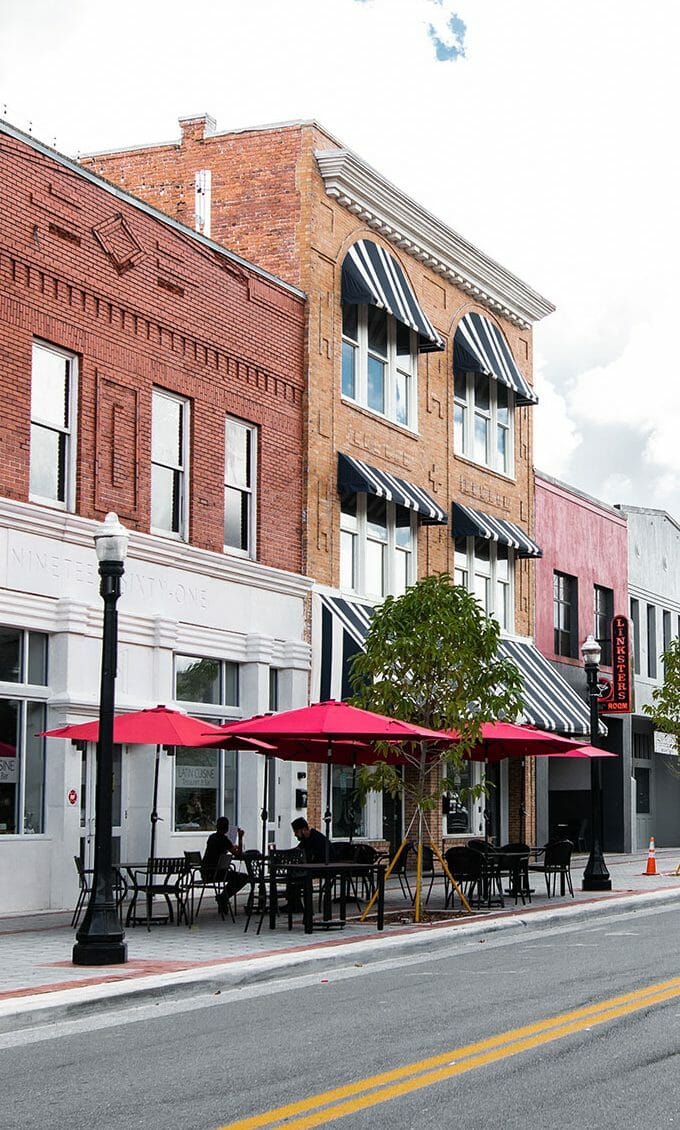
Phase one for the Main St. Expansion Project is complete, the project’s new extended sidewalks along Main St. create new outdoor dining spaces and a more pedestrian-friendly environment.
The process of these large-scale projects is ongoing, but the City of Lakeland recently released a comprehensive plan. The next step for the City of Lakeland—the study portion of the project—is looking at development sites and working with local partners to come up with an area plan in order to ensure easy walkability and transportation and to confirm that the area has been utilized to its fullest potential. Since Downtown Expansion is in its initial stages, the future budget is undetermined—but at the moment, the base number is $150,000 for the study portion.
Alis Drumgo hopes that when the plan is generated, it will benefit real-estate driven entrepreneurs as well as give a level of certainty to developers who are interested in taking on projects in Lakeland. “A lot of times when developers come to a city, they’re unsure of what a city may want to see in an area,” he explains. “So for us to have that plan rendered out to look at the uses and understand what the citizens want. It will provide a clearer path for that growth, and we’ll be able to meet the needs of the areas with as few growing pains as possible. Our population is already growing, and ideally the new development will accommodate it.”
The project is, in essence, about developing Downtown to match our expanding community—and the City of Lakeland would love to see the community participate. “When you see the community meetings, pop up,” Drumgo says to the readers. “We encourage you to give your input!”
“The project is, in essence, about developing Downtown to match our expanding community—and the City of Lakeland would love to see the community participate.”
Variety Housing Project
The housing crisis has affected people all across the globe. In the United States alone, there is a shortage of over seven million homes for people of lower income levels. Unfortunately, this issue affects Lakeland, too. But the City of Lakeland’s Housing Project is working hard to aid those affected. The Affordable Housing Office has a goal—to create as many new units as they can with the limited resources that the city has, in order to provide affordable housing. The city is taking multiple approaches to achieve this goal. In addition to constructing new units, the City of Lakeland is looking into amending city zoning codes in order to allow for mobile homes and “tiny houses,” or small houses constructed on a permanent towable trailer.
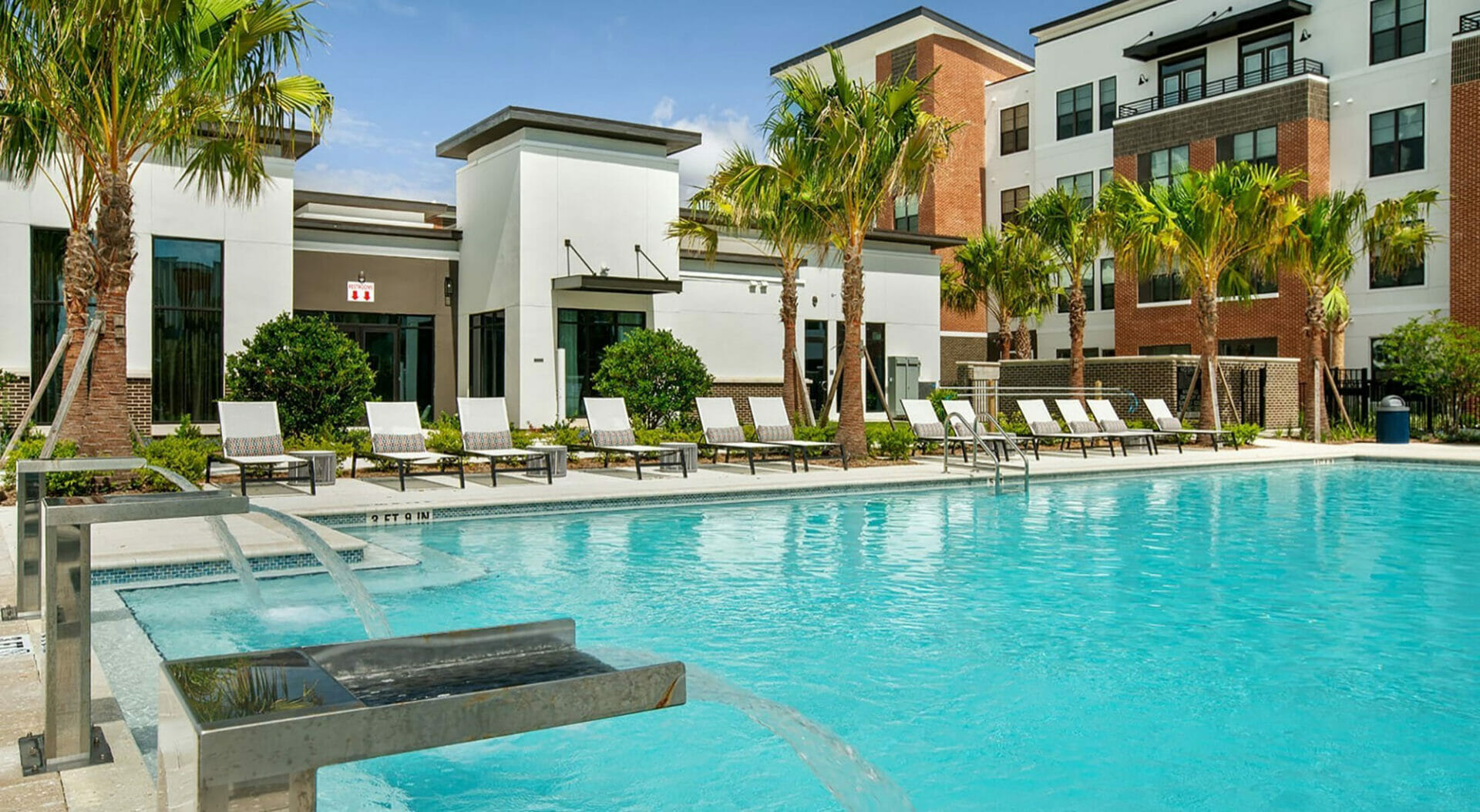
Mirrorton Apartments
600 E Bay St.
Lakeland , Fl
mirrorton.com
In the housing market, the concept of “affordability” means that housing should cost no more than 30% of a person’s income. “We’ll never have enough units that meet that affordable definition,” says Teresa Maio, Planning and Housing Manager. “But the goal is to provide as many units as we can and as many different types to give people options—we recognize that we really need a mix of all housing types in the city. And affordable housing isn’t just about making the units available for those income levels, but also looking at what can do as a community to provide better employment opportunities so [the affected people] have the income to be able to afford units that are not limited by income restrictions.”
. . .
Completed Projects
Mirrorton
This luxury apartment complex offers high-end amenities and 17 distinct floor plans which range from one bedroom/one bathroom to three-story townhomes.
The Gardens
One Bedroom apartment homes in the garden district, walking distance of the Joinery and Hollis Gardens.
. . .
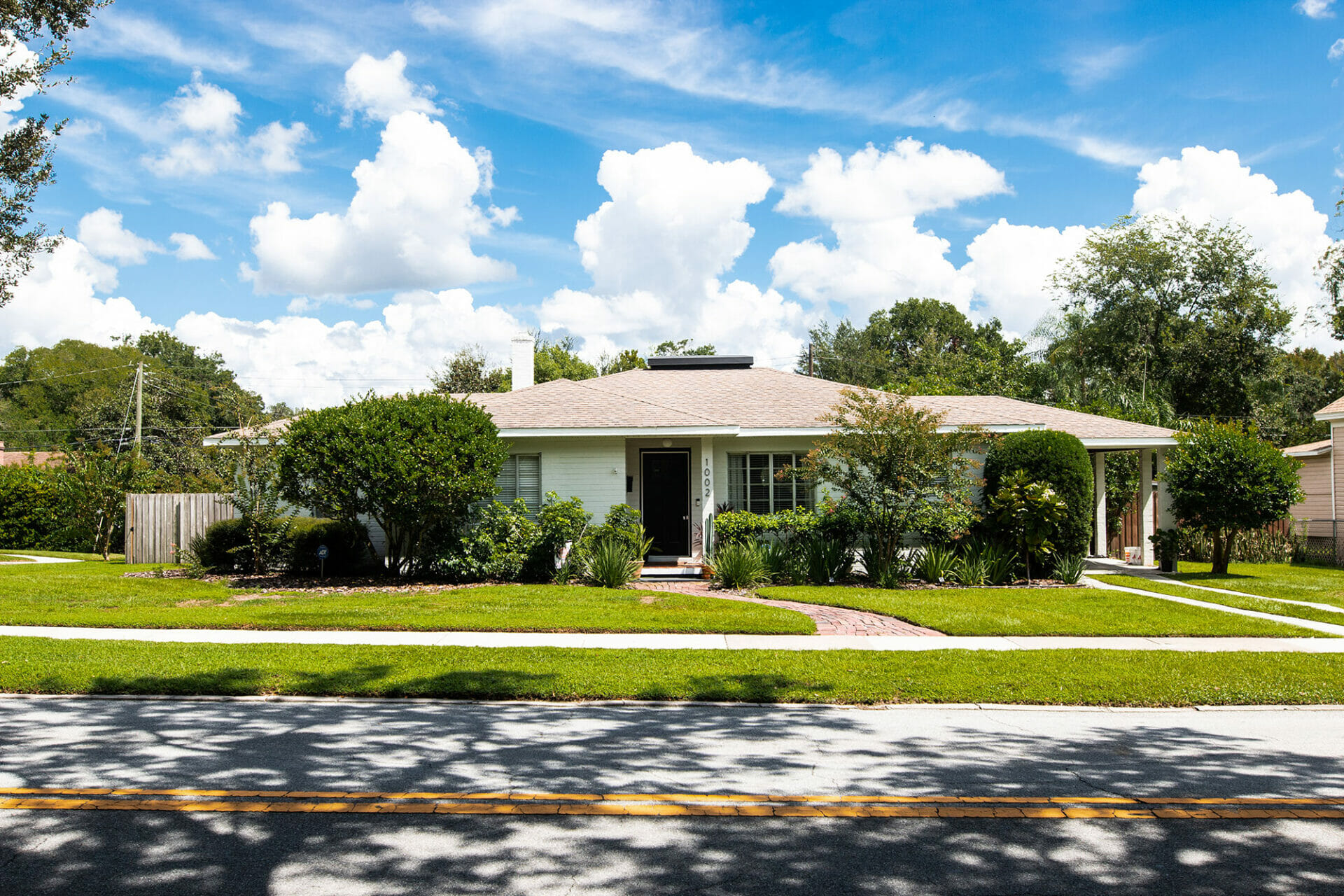 According to Maio, the city has shifted from focusing on rehabilitation to focusing on the construction of new units. The City of Lakeland hopes to fund this effort with state and federal grants as well as funds allocated by the city commission and a community development agency. The community development agency has previously allocated $250,000, but this year Lakeland Government is proposing to increase that to $500,000. Altogether, in 2021, about two million dollars will be used to focus on new construction to aid the housing crisis. “We always hear that there’s not enough being done and it’s so hard to find housing,” Maio adds. “We would like readers to know that the city shares in that frustration, and it’s not an issue that we’ve been ignoring or that we ever will ignore, and we’ll put as many resources as possible towards addressing the issue.”
According to Maio, the city has shifted from focusing on rehabilitation to focusing on the construction of new units. The City of Lakeland hopes to fund this effort with state and federal grants as well as funds allocated by the city commission and a community development agency. The community development agency has previously allocated $250,000, but this year Lakeland Government is proposing to increase that to $500,000. Altogether, in 2021, about two million dollars will be used to focus on new construction to aid the housing crisis. “We always hear that there’s not enough being done and it’s so hard to find housing,” Maio adds. “We would like readers to know that the city shares in that frustration, and it’s not an issue that we’ve been ignoring or that we ever will ignore, and we’ll put as many resources as possible towards addressing the issue.”
In addition to helping the issue, the Variety Housing Project will also benefit the local economy: the new construction will impact construction materials purchased as well as contractors involved. The heart of this project, though, isn’t about economic gain: it’s about people.“There is obviously the benefit to the family that’s being served,” Maio says. “[But] I think that it also helps the city, and maybe its residents, feel more compassionate about the needs of others.”
“The Variety Housing Project will also benefit the local economy: the new construction will impact construction materials purchased, as well as, contractors involved.”
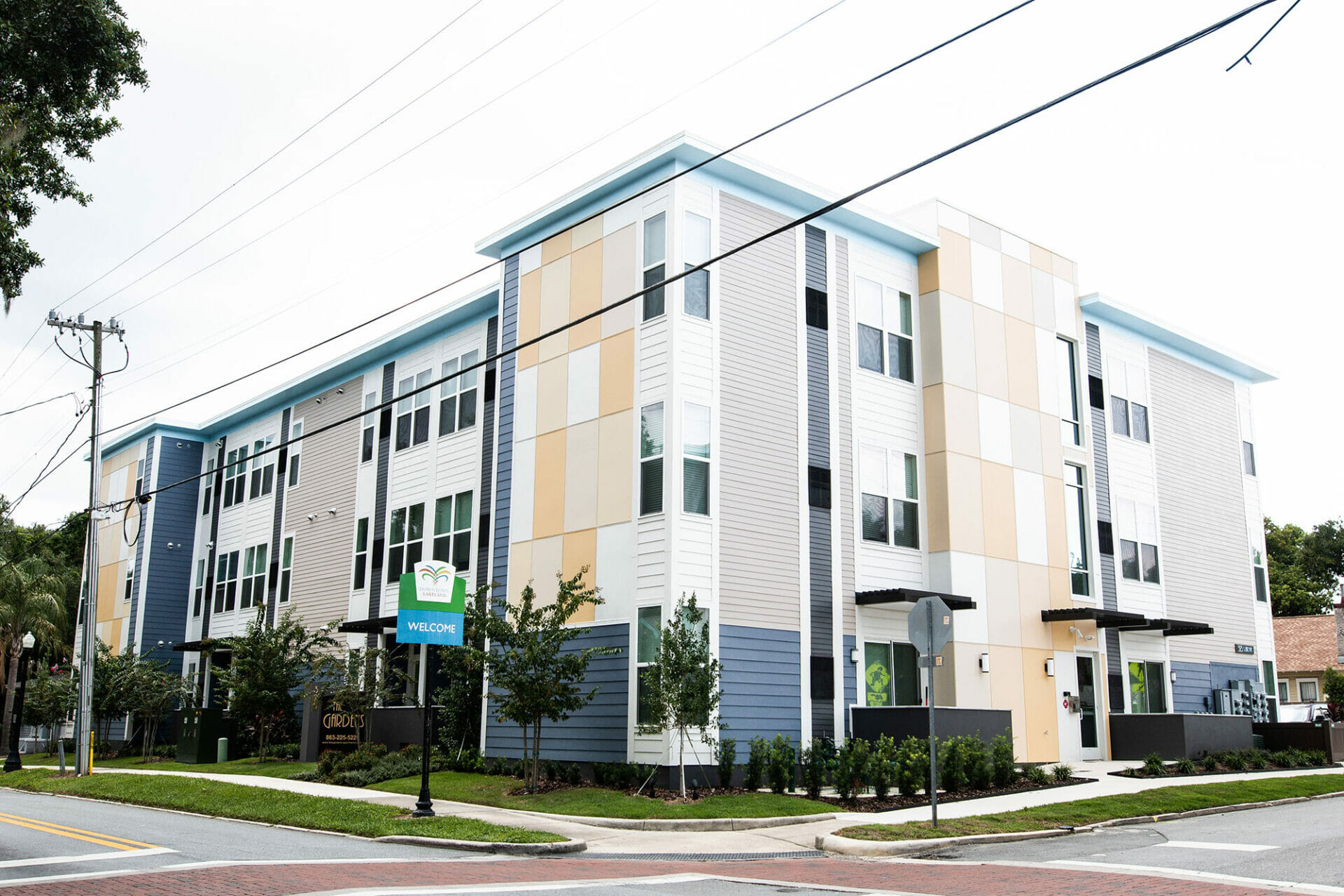
The Gardens 325 S. Lake Ave., Lakeland, FL 33801 thegardens-apartments.com
City of Lakeland officials hope that readers will stay engaged with these projects, continue to participate in Lakeland development, and stay patient as the projects unfold. Since these are big projects, they require substantial funding, which unfortunately doesn’t happen overnight—but little by little, Lakeland will grow into its new population. “We’re playing the long game on a lot of this, but I think there will be some immediate results as well,” says Alis Drumgo. “Ultimately we’re trying to keep things moving along so we can continue to develop and grow as a city and maintain our standing in the region, because folks are interested in Lakeland, and we want to maintain the quality of life.”

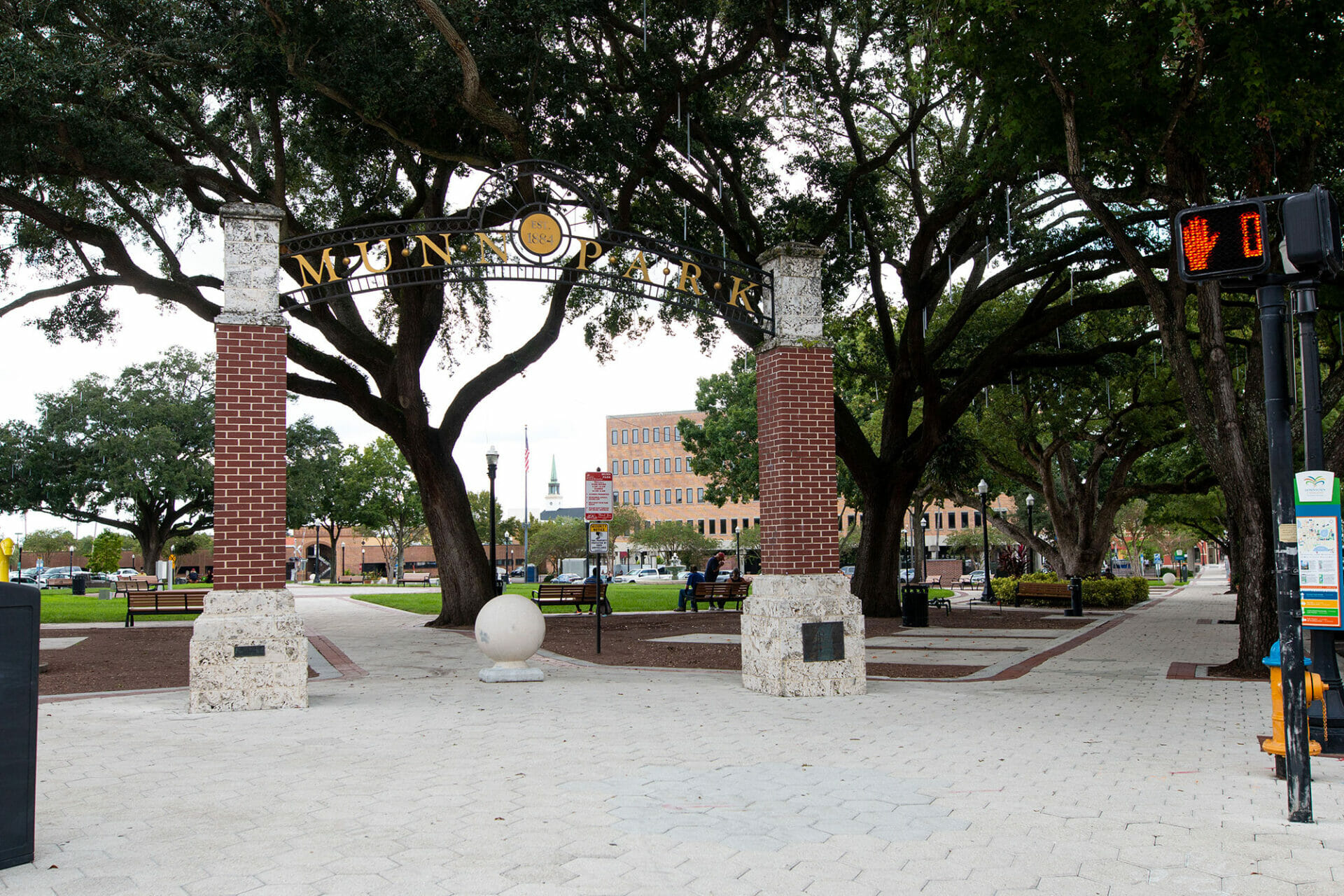 . . .
. . .